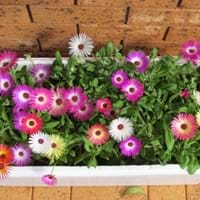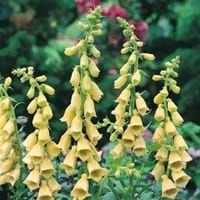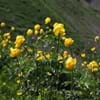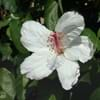Life Span
Annual
Biennial
Type
Flowering Plants
Flowering Plants, Perennial
Origin
South Africa
Southern Europe, Russia/Siberia, Turkey
Types
it is a type of daisy
Carillon, Temple Bells
Habitat
Humid climates, Warmer regions
Terrestrial
USDA Hardiness Zone
Not Available
3-8
AHS Heat Zone
9 - 1
8 - 1
Sunset Zone
A2, 1a, 1b, 2a, 2b, 3a, 3b, 4, 5, 6, 7, 8, 9, 10, 11, 12, 13, 14, 15, 16, 17, 18, 19, 20, 21, 22, 23, 24
21,22
Habit
Prostrate/Trailing
Upright/Erect
Flower Color
Red
Light Yellow, Brown
Flower Color Modifier
Bicolor
Bicolor
Fruit Color
Brown
Non Fruiting Plant
Leaf Color in Spring
White, Lime Green, Ivory
Green
Leaf Color in Summer
White, Lime Green, Ivory
Green
Leaf Color in Fall
White, Lime Green, Ivory
Green
Leaf Color in Winter
Light Green
Light Green
Leaf Shape
Long Linear
Ovate
Plant Season
Spring, Summer, Fall, Winter
Spring, Summer
Sunlight
Full Sun, Partial Sun, Partial shade
Full Sun, Partial Sun
Type of Soil
Loam, Sand
Clay, Loam
The pH of Soil
Acidic, Neutral, Alkaline
Neutral
Soil Drainage
Well drained
Well drained
Bloom Time
Spring, Late Spring, Early Summer, Early Fall, Fall, Late Fall, Early Winter
Early Summer, Summer
Tolerances
Drought
Not Available
Where to Plant?
Container, Ground, Pot
Ground, Pot
How to Plant?
Seedlings
Divison, Seedlings, Seperation
Plant Maintenance
Medium
Medium
Watering Requirements
Requires regular watering
Requires watering in the growing season
In Summer
Ample Water
Lots of watering
In Spring
Average Water
Moderate
In Winter
Average Water, Ample Water
Average Water
Soil pH
Neutral, Slightly Acidic
Neutral
Soil Type
Loam, Sand
Clay, Loam
Soil Drainage Capacity
Well drained
Well drained
Sun Exposure
Full Sun, Partial shade, Partial Sun
Full Sun, Partial Sun
Pruning
No pruning needed
cut main flower spike
Fertilizers
All-Purpose Liquid Fertilizer
All-Purpose Liquid Fertilizer
Pests and Diseases
Not Available
Downy mildew, Leaf spot, Powdery mildew
Plant Tolerance
Drought
Not Available
Flower Petal Number
Single
Single
Foliage Texture
Medium
Medium
Foliage Sheen
Glossy
Matte
Attracts
Not Available
Not Available
Allergy
Not Available
Blurred vision, Confusion, Depression, Diarrhea, Disorientation, drowsiness, Fainting, Halos around objects, Headache, Irregular or slow heartbeat, Lethargy, Loss of appetite, Low blood pressure, Nausea, Rash, Stomach pain, Vomiting, weakness
Aesthetic Uses
Beautification, Showy Purposes
Showy Purposes
Beauty Benefits
Not Available
Not Available
Environmental Uses
Air purification
Air purification
Medicinal Uses
No Medicinal Use
No Medicinal Use
Part of Plant Used
Flowers
Whole plant
Other Uses
Used as Ornamental plant
Used as Ornamental plant
Used As Indoor Plant
No
No
Used As Outdoor Plant
Yes
Yes
Garden Design
Bedding Plant, Groundcover
Bedding Plant, Cutflower, Mixed Border
Botanical Name
DOROTHEANTHUS bellidiformis
DIGITALIS grandiflora
Common Name
Livingstone Daisy, Mezoo Trailing Red Livingstone Daisy
Large Yellow Foxglove, Yellow Foxglove
In Hindi
Livingstone Daisy
पीला Foxglove
In German
Livingstone Daisy
Gelber Fingerhut
In French
Livingstone daisy
Digitale Jaune
In Spanish
Livingstone daisy
Foxglove amarillo
In Greek
Λίβινγκστον μαργαρίτα
κίτρινο Foxglove
In Portuguese
Livingstone daisy
Foxglove amarelo
In Polish
Livingstone daisy
żółty naparstnica
In Latin
Livingstone primula
Yellow Foxglove
Phylum
Not Available
Magnoliophyta
Class
Not Available
Magnoliopsida
Order
Caryophyllales
Scrophulariales
Family
Aizoaceae
Scrophulariaceae
Genus
Dorotheanthus
Digitalis
Clade
Angiosperms, Core eudicots, Eudicots
Angiosperms, Asterids, Eudicots
Tribe
Not Available
Not Available
Subfamily
Ruschioideae
Not Available
Number of Species
Not Available
Not Available
Importance of Livingstone Daisy and Yellow Foxglove
Want to have the most appropriate plant for your garden? You might want to know the importance of Livingstone Daisy and Yellow Foxglove. Basically, these two plants vary in many aspects. Compare Livingstone Daisy and Yellow Foxglove as they differ in many characteristics such as their life, care, benefits, facts, etc. Every gardener must at least have the slightest clue about the plants he wants to plant in his garden. Compare their benefits, which differ in many ways like facts and uses. The medicinal use of Livingstone Daisy is No Medicinal Use whereas of Yellow Foxglove is No Medicinal Use. Livingstone Daisy has beauty benefits as follows: Not Available while Yellow Foxglove has beauty benefits as follows: Not Available.
Compare Facts of Livingstone Daisy vs Yellow Foxglove
How to choose the best garden plant for your garden depending upon its facts? Here garden plant comparison will help you to solve this query. Compare the facts of Livingstone Daisy vs Yellow Foxglove and know which one to choose. As garden plants have benefits and other uses, allergy is also a major drawback of plants for some people. Allergic reactions of Livingstone Daisy are Not Available whereas of Yellow Foxglove have Blurred vision, Confusion, Depression, Diarrhea, Disorientation, drowsiness, Fainting, Halos around objects, Headache, Irregular or slow heartbeat, Lethargy, Loss of appetite, Low blood pressure, Nausea, Rash, Stomach pain, Vomiting and weakness respectively. Having a fruit bearing plant in your garden can be a plus point of your garden. Livingstone Daisy has no showy fruits and Yellow Foxglove has no showy fruits. Also Livingstone Daisy is not flowering and Yellow Foxglove is not flowering . You can compare Livingstone Daisy and Yellow Foxglove facts and facts of other plants too.





